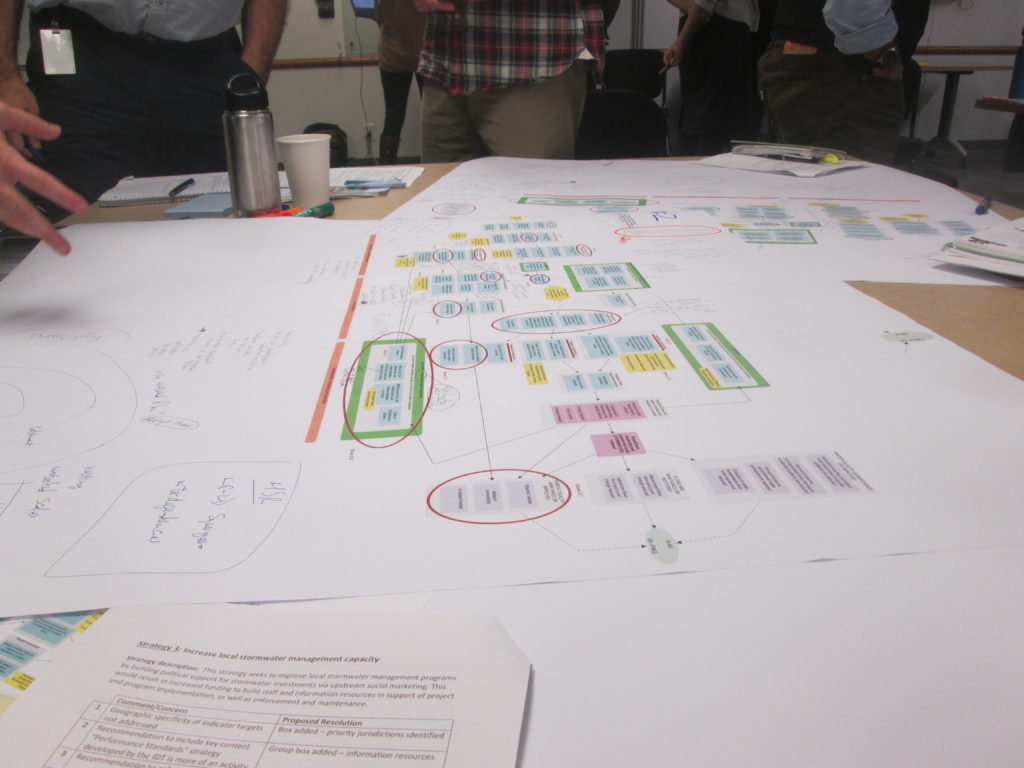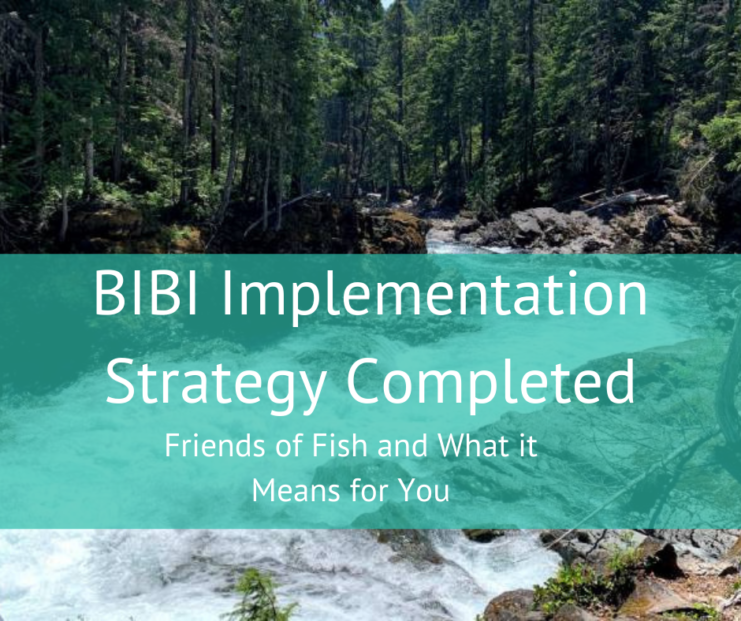The Benthic Index of Biotic Integrity (B-IBI) Implementation Strategy was just released! This is the result of a tireless effort by a stellar Interdisciplinary Team, our Stormwater Strategic Initiative Lead team and a wide cast of collaborators.
What does it mean? The base of the aquatic food web is comprised of small biological critters- macroinvertebrates—that are like the canary in the coal mine for stream water quality. Think those crazy ugly dolls which also happen to be proxies themselves for diversity and acceptance.

These macroinvertebrates like caddisflies and mayflies, are proxies for good water quality.
Clean water has implications for fisheries, recreation, municipal costs to manage pollution, flooding and resilience, impacts on small communities and businesses. B-IBI results reflect the extent of hardened surfaces (what we refer to as the urban condition gradient), and how hydrology (water flow), habitat, and water chemistry affect this base of the aquatic food chain.

There are four strategies earmarked to maintain excellent scores and improve those that are fair:
Increased Local Capacity Strategy: The objective of this strategy is to improve funding, staff capacity, and availability of decision support tools for local stormwater management programs.
Watershed Planning Strategy: The objective of this strategy is to promote multi-program and cross-jurisdictional planning on a coordinated watershed scale to maximize benefits from protection, mitigation and restoration.
Education and Incentives Strategy: The objective of this strategy is to encourage stormwater retrofits and source control activities that limit pollutants, and to encourage habitat restoration on privately owned properties through focused incentives supported by education.
Draft Working Lands Strategy: The objective of this strategy is to reduce the risk to forests and agricultural areas of being converted to urban or suburban land uses, and to reduce ongoing impacts of working lands on stream health.
There is ample evidence that impacts on stream quality are commensurate with the extent of development in a given watershed. Therefore, there is benefit in preventing the conversion of working lands to other more intense land uses such as commercial or residential development. The implementation of Best Management Practices (BMPs) on working lands can mitigate adverse impacts.
Did you know?
Our team has already engaged smaller communities grappling with stormwater management and that conversation alone has highlighted the promise of collaboration between surface water agencies, conservation districts, WSU extension, health districts, and larger jurisdictions. We look forward to continuing these conversations.

